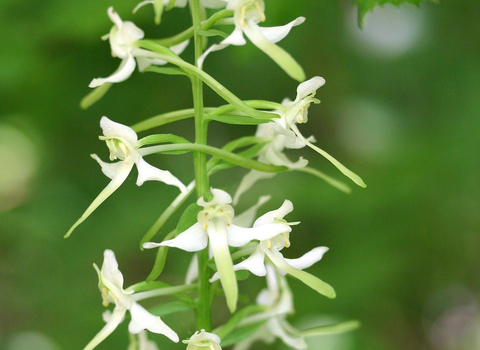©Philip Precey

©Jim Higham
Greater butterfly-orchid
The Greater butterfly-orchid is a tall orchid of hay meadows, grasslands and ancient woodlands. It has whitish-green flowers that have spreading petals and sepals - a bit like the wings of a butterfly.
Scientific name
Platanthera chloranthaWhen to see
May to JulySpecies information
Category
Statistics
Height: 20-40cmClassified as Near Threatened on the Vascular Plant Red Data List for Great Britain.
Habitats
About
The Greater butterfly-orchid is a distinctive plant of hay meadows, grasslands and ancient woodlands on chalk soils.Its flower spike can grow quite tall, displaying up to 30 whitish-green flowers in a loose cluster from May to July. The spreading sepals and petals of the flowers look a bit like the wings of a butterfly.
